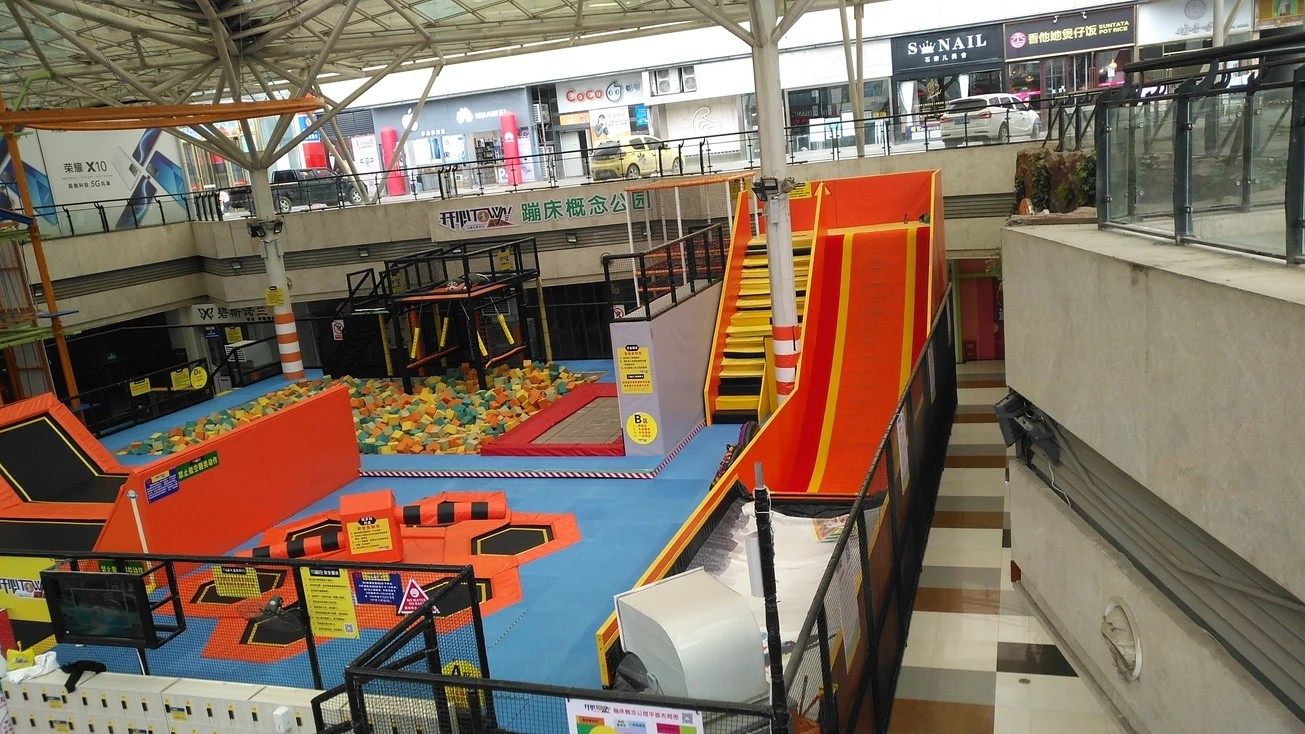Don’t Launch Your Trampoline Park Yet! The Size & Height Mistakes New Owners Always Make (Mizone’s Fix Inside)
Thinking about starting an indoor trampoline park? You’ve probably pictured the excitement: kids bouncing higher than the ceiling, parents snapping photos, and lines out the door—but here’s the harsh truth: mess up the size or ceiling height, and your dream could crash faster than a kid missing the foam pit.
Why does size and height matter so much? Simple: too small, and you’ll cram guests into a chaotic, unsafe space. Too low a ceiling, and you’re begging for injuries (and lawsuits). The best parks? They nail these two details first.

Let’s start with ceiling height—this is non-negotiable. Ever heard of ASTM F2970 or PAS 5000? These are the safety rules all pros follow, and they demand at least 17 feet (5.2 meters) of vertical clearance. No cutting corners here.
Wondering why 17 feet? It’s not random. Jumpers need room to flip, twist, and land without slamming into the ceiling. Go even an inch lower, and you’re not just breaking rules—you’re risking someone’s safety (and your park’s reputation).
But wait, what if you want high-performance trampolines? You know, the ones that let experienced jumpers do backflips or double twists? Then you’ll need more space. ISO standards (the global safety gurus) say those require 6 meters (almost 20 feet) of clearance.
Now, size. The International Association of Trampoline Parks (IATP) recommends a minimum of 18,000 square feet. But the most successful U.S. parks? They’re bigger—25,000 to 35,000 square feet. Why? More space means more attractions: foam pits, dodgeball courts, ninja courses—things that make guests come back again and again.
And here’s a pro tip: your actual trampoline area should take up 45-50% of the total space. The rest? Use it for seating, snack bars, or party rooms. Crowd those areas, and guests will feel trapped—not thrilled.
This is where most new owners fail: they grab a generic blueprint and hope for the best. But every park is different. Your space, budget, and audience (families? teens? athletes?) change everything.
That’s where Mizone (Mizone游乐) comes in. We’ve been building amusement parks since 2014, and we’ve seen every mistake in the book. Our secret? We don’t just sell equipment—we build custom solutions.
Need help figuring out if your space can fit 17-foot ceilings? We’ll do on-site measurements. Not sure how to split 25,000 square feet between trampolines and party zones? Our design team will map it out, down to the last spring.
And we don’t stop at plans. Mizone handles the whole process: from designing your park’s theme (spacey? tropical? retro?) to installing the trampolines, testing every bounce, and even training your staff. Plus, our after-sales team checks in regularly—so your park stays safe and bouncy for years.
Here’s the bottom line: starting a trampoline park is thrilling, but it’s not a guessing game. Size and height are the foundation—get them right, and the rest follows.
Ready to skip the stress and build a park that’s safe, packed, and profitable? Mizone’s here to make it happen. Let’s turn your vision into the next must-visit spot in town.
Contact us today—let’s make your trampoline park the one everyone’s talking about.
 Indoor Playground, Trendy Sport Gym, Trampoline Park, Adventure Game Park, Climbing Park Manufacturer Supplier
Indoor Playground, Trendy Sport Gym, Trampoline Park, Adventure Game Park, Climbing Park Manufacturer Supplier
